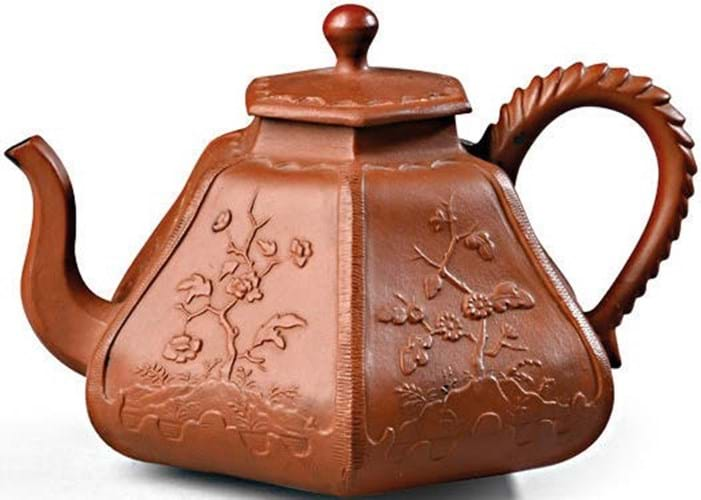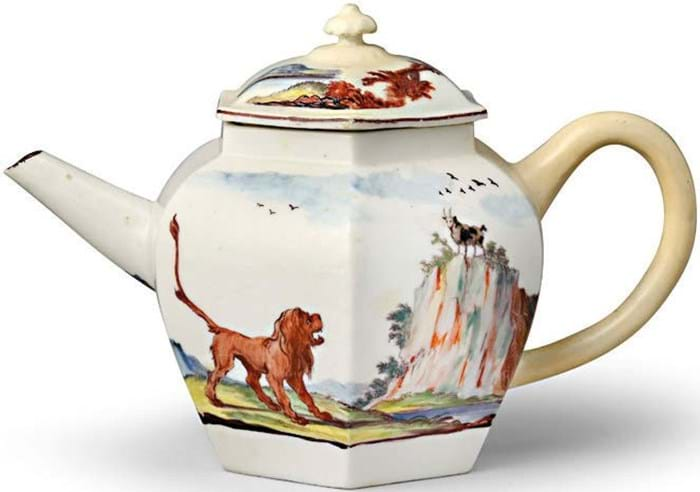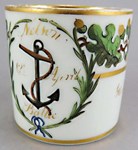
She was a key figure on many counts: a Sotheby’s expert (she began her career there in 1959); the author in 1966 of Scent Bottles (the first publication to separate Chelsea examples from those produced by the Girl in a Swing factory); an influential dealer (in the 1970s she shared a shop at Halkin Arcade in Knightsbridge with the silver dealers Brand Inglis and Timothy Schroder) and one of the original exhibitors and lecturers at the Haughton International Ceramics Fair from 1982.
The 43 lots on offer reflected both a deep knowledge of her subject and the varied and esoteric nature of her interests, from the very origins of European porcelain at the hands of Johann Böttger to the first London factories.
Meissen passion
Fluency in French and German helped Foster to gain access to some of the Continent’s most renowned collections of porcelain – early Meissen being a particular love.
She owned two Böttger stoneware teapots, c.1710-15: one of hexagonal form with a different flowering Oriental plant to each panel, the other a flattened globular vessel sprigged with flowering prunus that is a direct copy of a Yixing model.
The former, with a firing crack lined with a black glaze, sold at £17,000 (estimate £10,000- 15,000) to a UK collector, while the latter (the cover broken and restuck) went to another UK private buyer at £13,000 (guide £8000-12,000).
Made in Chelsea

Chelsea teapot and cover, c.1752-55, with decoration by Jefferyes Hamett O’Neale – £22,000 at Woolley & Wallis.
Both were outsold by a Chelsea hexagonal teapot and cover, c.1752-55, with fable decoration by Jefferyes Hamett O’Neale. A ‘teapot in fables’ appears in the 1755 Chelsea sale catalogue and a number are held in major collections including the Gardiner Museum in Toronto (Horse and the Ass), the British Museum (Boar and the Ass) and Colonial Williamsburg (The Lioness and the Fox).
The subject of Foster’s pot – on display at the Ashmolean Museum in Oxford between 2009-20 – was the Lion and the Goat, the latter standing on top of a mountain while vultures circle above, the lion on the other side of a stream, looking up at his former adversary. Old restoration to the cover and the handle had seriously yellowed under museum lights, but it was probably not as bad as it looked.
Estimated at £6000-8000, the pot took £22,000 from the UK trade.
This was one of three examples of this Red Anchor period form in the collection. A hexagonal teapot with famille rose birds and branches took £2800, while another with kakeimon design hammered at £3200.
The Kate Foster collection totalled just under £100,000, bringing the sale total to £520,920 – the best held by the department bar the famous day in February 2018 when a coverless teapot made by John Bartlam in Cain Hoy, South Carolina, c.1765, sold to the Metropolitan Museum of Art for £460,000.














